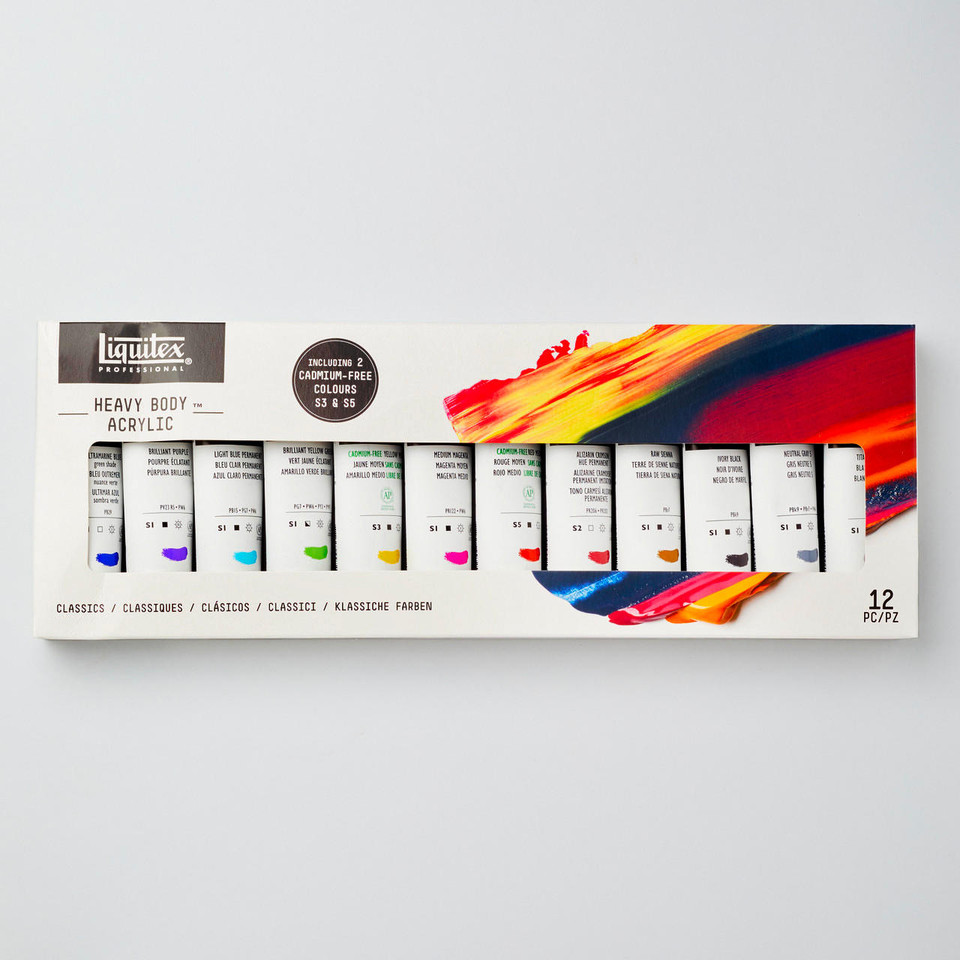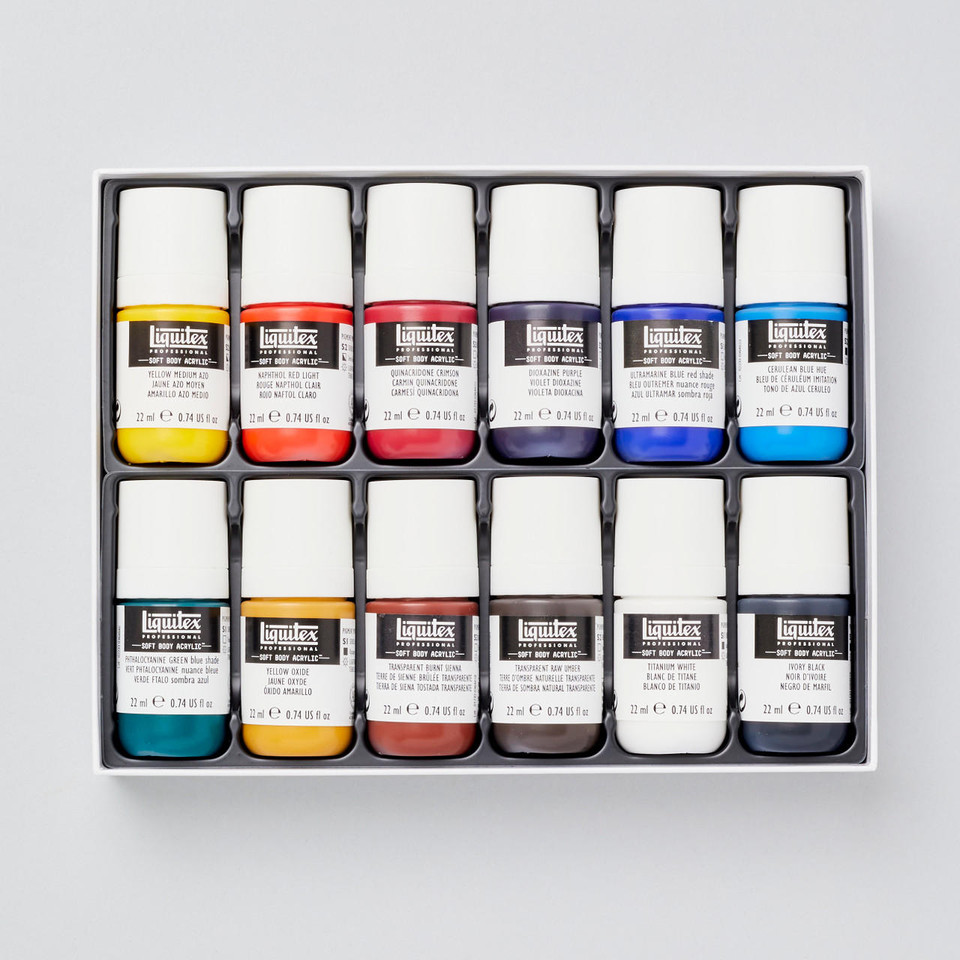Acrylic painting is a versatile paint medium that is only gaining more and more popularity among artists, both amateur and experienced. Its quick drying time, versatile viscosity, and ease of use make it a perfect choice for beginners looking to dive into the world of art. Whether you're interested in creating stunning landscapes, expressive portraits, or abstract masterpieces, acrylics offer endless possibilities for artistic expression. In this blog, we'll guide you through the essentials of acrylic painting for beginners, and help you get an understanding of this medium and discover what’s the best acrylic paint to choose for your practice!
Quick Drying -The binder in acrylics is a polymer which is essentially a plastic and allows for a quick drying time. This makes them an excellent choice for artists who prefer a more spontaneous and dynamic creative process. You can layer, blend, and experiment with textures in a relatively short time, which is not always feasible with oils or watercolours.
Versatility - Acrylic paint has many different viscosities which we'll explore in this blog and this means you can use them thinly like watercolours for delicate washes or layer them on thickly for impasto techniques that create texture and depth.
Durability - Acrylic paints are known for their longevity and resilience. Once they dry, they become water-resistant and don't yellow over time. This means your acrylic paintings will remain vibrant and true to their original colours for years to come.
Cleanup and Maintenance - Unlike oil paints, which require the use of potentially hazardous solvents for cleaning, acrylics can be easily cleaned up with water. This makes them a safer and more environmentally friendly option.
Great for Mixed Media - Acrylics can seamlessly integrate with other art mediums such as collage, pastels, and inks. This makes them a go-to choice for artists interested in mixed media art.
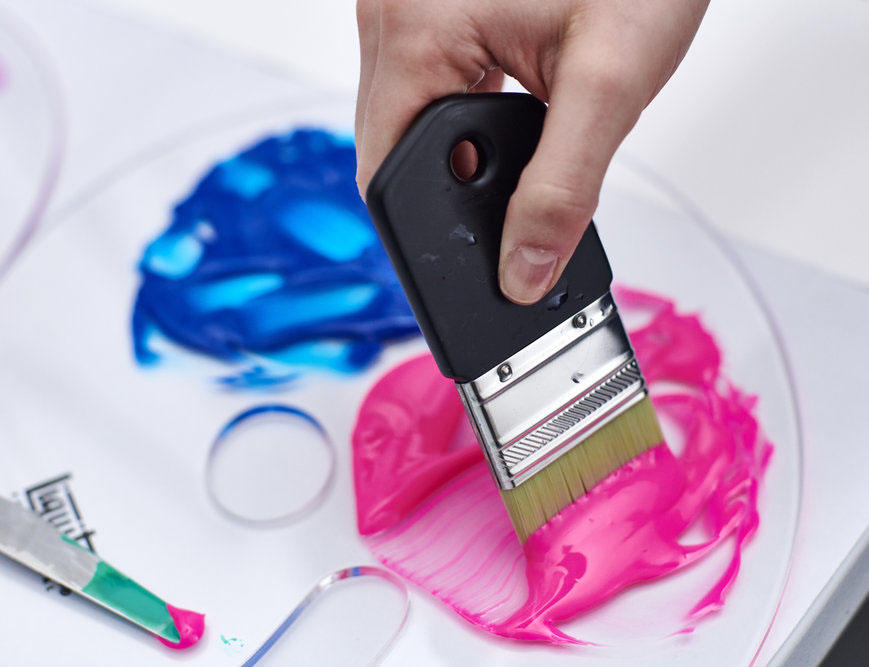

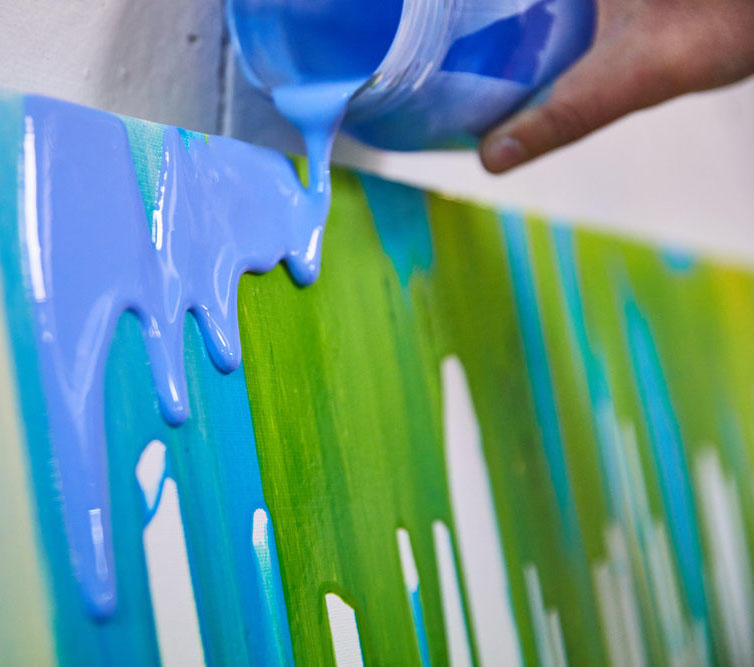
Along with quality control there are also many other factors to take into consideration to make it applicable for your practice. One of which being viscosity. Acrylics are widely available primarily in a number of different consistencies which you can see below:
- Heavy Body
- Soft Body/Open
- Fluid
- High Flow/Inks
Soft body acrylics shave a relatively creamy consistency and are marginally more self-levelling than thicker heavier bodied paints. As they have a lower viscosity you’re able to achieve a very smooth application, also allowing you to have the option to add an acrylic medium to create a thicker body. So these paints are more applicable to fluid continuous applications
Heavybody acrylics have a much lower viscosity, somewhat similar to heavy cream as they have a much lower viscous binder holding the pigment together. These allow for very fine dispersion, flexibility, durability and very strong adhesion too.
They can also be mixed with airbrush medium for most spray purposes. Initially these were actually made on a custom basis but due to popular demand they were so made available to the wider public.


Soft body acrylicshave a relatively creamy consistency and are marginally more self-levelling than thicker heavier bodied paints. As they have a lower viscosity you’re able to achieve a very smooth application, also allowing you to have the option to add an acrylic medium to create a thicker body.
Golden also have a range in soft body called Open acrylics. These have different behavioural aspects to them as they have a much greater extended drying time. As regular soft body acrylics dry quite quickly therefore can become unusable. In some cases it can take 7 – 14 days depending on how much paint is applied to form a film. Thus allowing you to work on your piece whilst it is still wet if desired.
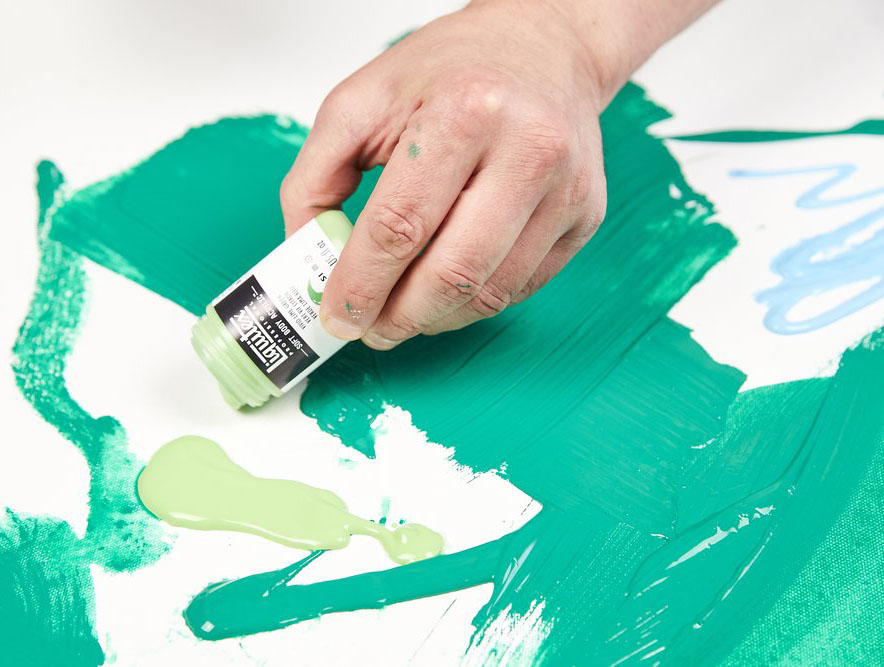
SHOP HEAVY & SOFT BODY ACRYLICS NOW
Golden Fluid Acrylics are intense, permanent acrylic paints produced from lightfast pigments instead of dyes. With the consistency of heavy cream, they offer strong colours with no fillers or extenders. Perfect for spraying, brushing and staining.
The paint loads evenly onto a paintbrush, and flows consistently from brush to surface, allowing for longer, more uniform brush strokes than the Golden Heavybody Acrylics. The Golden Fluid Acrylics are also an ideal paint for a canvas that needs to be shipped or moved around, because they expand and contract in different temperatures without cracking - the perfect paint for regular exhibitors!


High flow acrylics are extremely finely ground pigments in the binder. They have a similar consistency to acrylic ink but the main difference and advantage of the high flow is they are pigment based meaning being more lightfast as opposed to dye based which you most commonly find in inks.
They are often used sometimes to imitate watercolour effects in terms of washes, staining techniques but as they’re considerably greater levels of opacity you will achieve a more concentrated finish than watercolour or inks.
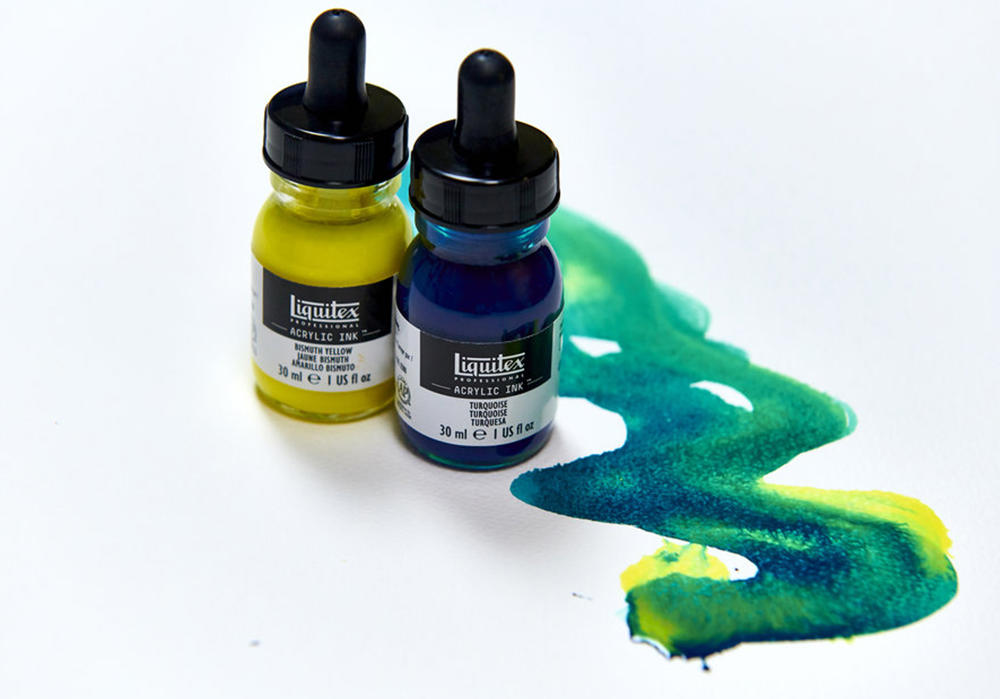
Acrylic Ink is the most fluid of the acrylic paints. It is made of super fine pigments suspended in a state of the art acrylic emulsion that is as fluid as water. Acrylic Ink is intensely coloured and dries with a soft gloss finish. It can be applied using airbrush, pen or brush. This is the consistency of acrylic used to fill empty marker pens. Airbrush Acrylics are very similar to Acrylic ink, but are less likely to clog or impair the flow within airbrush equipment
SHOP FLUID, HIGH FLOW & ACRYLIC INKS
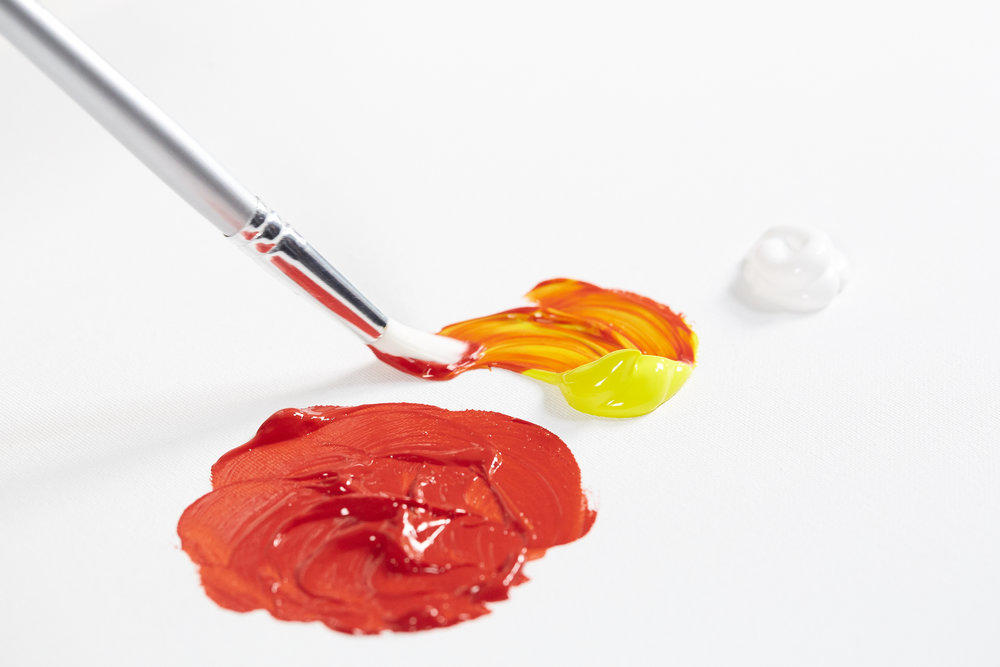

The paintbrush is the quintessential tool for any artist using acrylic paint, and for good reason. Brushes come in a variety of shapes and sizes, allowing artists to create a broad spectrum of strokes and textures. They're excellent for precision, fine details, and intricate work. Here are some key points to consider when using brushes in your painting:
Control and Precision - Brushes provide an exceptional level of control. With a delicate touch, you can create intricate details and fine lines, making them ideal for portrait and realistic landscape paintings.
Blending - The soft bristles of brushes allow for seamless blending of colors, creating smooth transitions and gradients, perfect for achieving realistic skin tones and soft skies.
Layering - Brushes are excellent for layering paint, allowing artists to build up depth and texture gradually. This technique is often used in traditional oil and acrylic paintings.
Stippling and Texturing - By stippling with a brush, artists can create a variety of textures, such as foliage, grass, or the rough surface of a building.
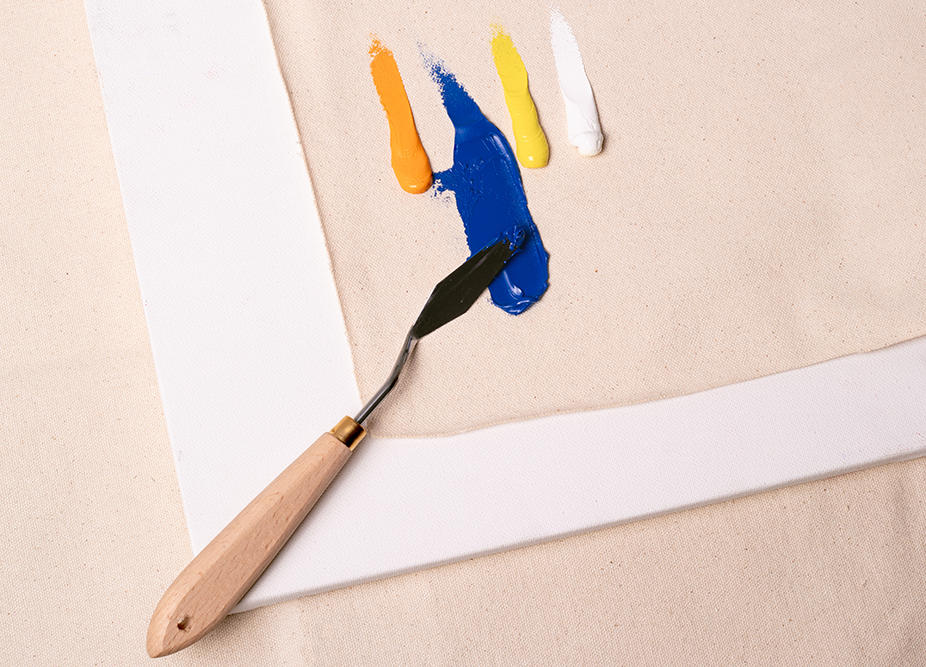

Palette knives, on the other hand, are known for their bold and expressive qualities. Unlike brushes, palette knives are used for thick impasto techniques, creating a distinctive three-dimensional texture. Here are the strengths of palette knife painting:
Texture and Depth - Palette knives excel at creating thick impasto textures. Artists can sculpt paint onto the canvas, resulting in a tactile, sculptural quality that adds depth and character to the artwork.
Expressive Marks -The flat, blunt edge of a palette knife produces bold, expressive marks. It's ideal for abstract or contemporary art, where the emphasis is on texture and the impact of each stroke.
Palette Knife Portraits - Some artists have mastered the palette knife technique for portraits, creating captivating works that combine the delicacy of human features with the dynamic energy of the palette knife.
Quick Drying - Because palette knife painting typically uses less paint and thicker layers, it often dries faster than brush paintings, allowing artists to work more rapidly.

